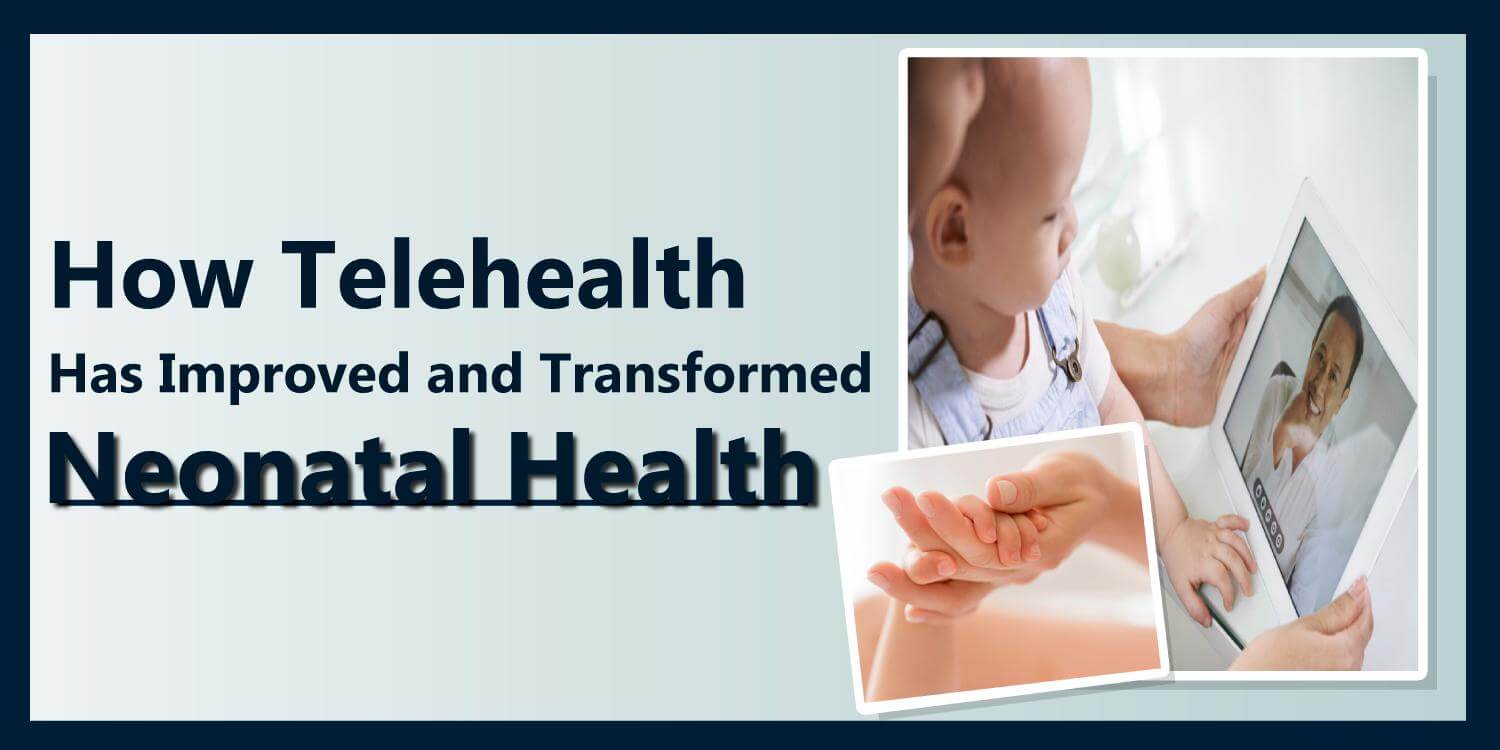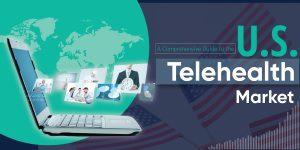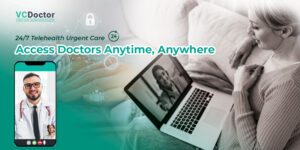How Telehealth Has Improved and Transformed Neonatal Health
Telemedicine has not only transformed the way of treatments for adults but also for infants. Telemedicine for pediatrics is revolutionizing the healthcare sector with immense possibilities. As per a report, on average, pregnant women visit a doctor more than ten times during pregnancy. However, Telemedicine can reduce this number of visits by about half. Virtual care, including remote healthcare facilities, has continued to transform the healthcare system as a whole. The era of remote healthcare has been fueled by the COVID-19 pandemic and can provide relief for people seeking prenatal and neonatal health care.
In essence, they do not have to go to the doctor 10-15 times but instead, supplement their personal visits with remote health facilities.
Telehealth options include virtual visits and remote patient monitoring, such as the use of home monitoring devices. On average, pregnant women see a doctor 10-15 times during pregnancy. However, Telemedicine can reduce this number of visits by about half. Virtual care, including remote healthcare facilities, has continued to transform the healthcare system as a whole.
The era of remote healthcare has been fueled by the COVID-19 pandemic and can provide relief for people seeking prenatal and neonatal health care. In essence, they do not have to go to the doctor more than 10 times but instead, supplement their personal visits with remote health facilities.
What is Neonatal Health?
The health of newborns is extremely important, as a significant number of newborns need to be stabilized after childbirth for health reasons. About 10% of newborns even need breathing help to survive.
Using innovative technology and remote healthcare practices, most hospitals and medical facilities are now able to provide patients with virtual clinical services for a wide range of health problems, from psychiatric, gastrointestinal, and even speech therapy. E-consultations have recently become a major issue and are often targeted at cardiology and neonatal patients.
Telehealth allows the patient and the healthcare professional to have direct visual contact in high definition. This allows pediatricians and neonatologists to easily see the baby’s breathing the pigmentation of their skin and provide accurate estimates of the baby’s blood pressure.
In this way, long-term health provides better protection against life-threatening events that are often associated with childbirth.
How is Neonatal Health a Challenge for Telehealth?
Newborn care is considered to be one of the most sensitive areas of health care. If on-site providers do not have access to neonatal care professionals, they are likely to have to wait for additional help to arrive. The local transport team rushes to the maternity ward to help stabilize the baby, and the baby and mother must then be transported to the local neonatal care facility if additional help is needed.
Many geographical areas lack access to high-quality neonatal care. Mothers living in rural areas may give birth at a local hospital but find that they have to drive hundreds of miles to the nearest neonatal care center. They can be away from family and friends during difficult times.
There is nothing more intimidating to a new mother than weaning and leaving the newborn in the Intensive Care Unit (NICU). Where possible, the transport of infants to another institution and the separation of mother and child should be avoided in order to allow communication between mother and baby, reduce care costs and improve the patient experience.
Advancements in the Field of Telehealth Prenatal Care
There are significant advancements in the field of neonatal health in Telehealth. These advancements have made the digital treatment for babies extremely beneficial. Here are some of the top advancements in the field of Telemedicine for pediatrics.
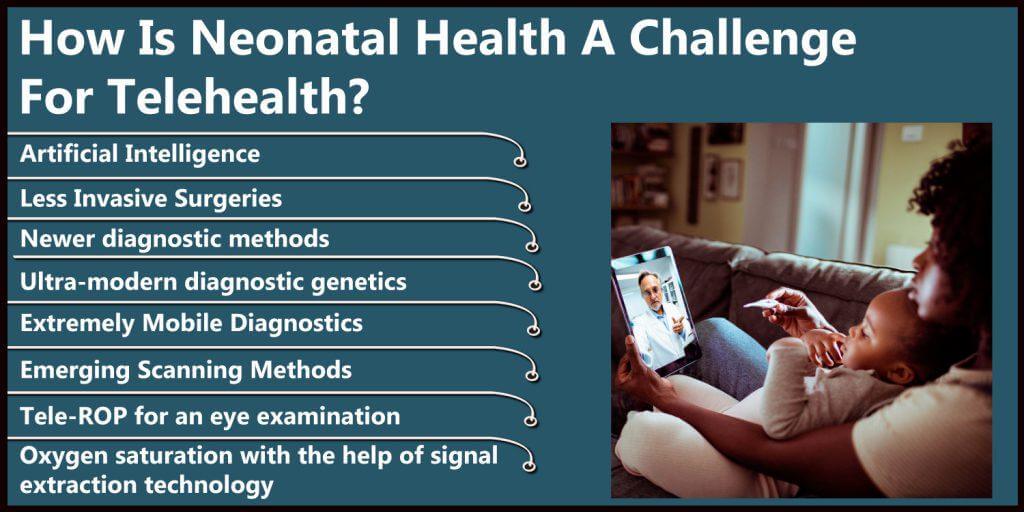
Artificial Intelligence
Medicines lose all their value of it’s not able to diagnose the disease. With AI integrations, patients can identify the several causes of the condition while diagnosing the exact condition. AI solutions have revolutionized Telemedicine for pediatrics and majorly participates in medical patient data management, which enables electronic medical records (EMRs), Artificial intelligent health management systems, and more.
Oxygen saturation with the help of signal extraction technology
Continuous monitoring of the neonate is essential for any lung disease. Without the need to cut the baby every time, healthcare providers can simply keep an eye on their oxygen saturation. It can be described as a non-invasive tool for accurate monitoring of the oxygen saturation index in newborn babies. Even in small infants, the pulse rate is low, and the signals are poor using a modern pulse oximeter with signal extraction technology, which has changed the critical treatment of newborns.
Newer diagnostic methods
Recent advances in technology have made it easier to diagnose host and pathogen-mediated diseases. It helps to improve the care of newborns in case of acute infections and ensures fast and effective treatment. These methods use polymerase chain reaction and molecular genetics to detect microbial resistance, thereby reducing the use of unnecessary antibiotics.
Ultra-modern diagnostic genetics
Evolution in genetic sequencing has pretty much changed the way of screening neonates for treatable metabolic disorders. Traditionally, biochemical screening has shown and edited milder forms of congenital metabolic defects that can be easily treated in neonates. However, with the help of advanced genetic testing, people can confirm the diagnosis and start treatment.
Less Invasive Surgeries
Laparoscopy has been used for several years, and it has been the type of surgical treatment that has allowed surgeons to achieve extremely efficient postoperative results. Surgical care of newborns has become easy as the development of less invasive surgeries has come to light. The 3-mm incisions which are involved in these surgeries are relatively painless and normally disappear within a few weeks of surgery.
Extremely Mobile Diagnostics
There are a number of portable diagnostic techniques available now which are helping in the evolvement of Telemedicine for pediatrics, such as functional 2D Echo, bedside lung ultrasound, portable ultrasound, and more. All these techniques are known to reduce the burden on the child.
Emerging Scanning Methods
The newer technologies have led to new MRI devices for infants that deliver better efficiency and facilitate diagnosis and improve treatment plans. PET scans such as HIDA, DMSA, and DTPA, help monitor a newborn’s overall health without causing physical pain. Parents can even check their baby’s kidney status with the help of a DMSA and DTPA scan.
Tele-ROP for an eye examination
ROP screening helps diagnose early retinopathy in premature infants. This technique allows you to control retinoblastoma and other eye conditions in your newborn without inserting a needle or tube.
Benefits of Telemedicine for Pediatrics
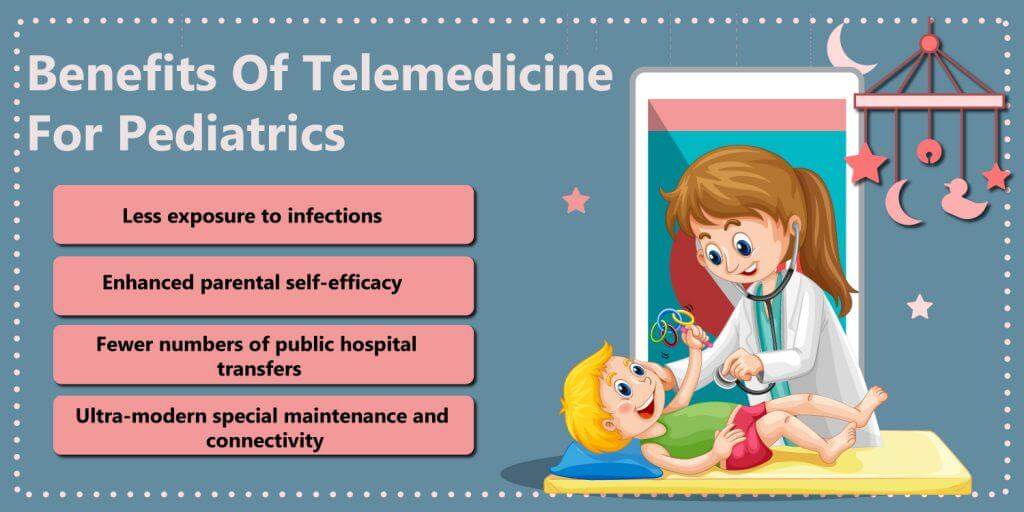
Fewer numbers of public hospital transfers
Telehealth can be used to improve access to care by facilitating video connections between neonatal specialists in large care centers and providers in smaller hospitals. Avoiding referrals benefits patients’ families because it keeps them closer to home and eliminates the risks of referrals while increasing community hospital revenues.
Ultra-modern special maintenance and connectivity
One of the main benefits of Telehealth is that it allows providers to connect remotely with patients and clinicians. According to the study, the demand for neonatal specialists has increased with the increase in recent premature births. As discussed, remote sensing can be beneficial to the neonatal population as it allows neonatal professionals to remotely monitor patients and interact with families. This increases access to care by facilitating remote control of specialist care.
Enhanced parental self-efficacy
Telehealth and RPM can be valuable tools for patients’ families after leaving a hospital or NICU. According to the survey, parents feel extremely positive about neonatal remote home care. The remote health program also increases parental self-efficacy and breastfeeding rates, which has a positive impact on the long-term health of newborns and may be an effective option for patients’ families living in rural or remote areas.
Less exposure to infections
Telemedicine video visits also helped reduce the number of potentially infected healthcare providers, as only one nurse had to be in the patient’s room. This, in turn, reduced the use of PPE, reducing costs and increasing the availability of PPE for other uses.
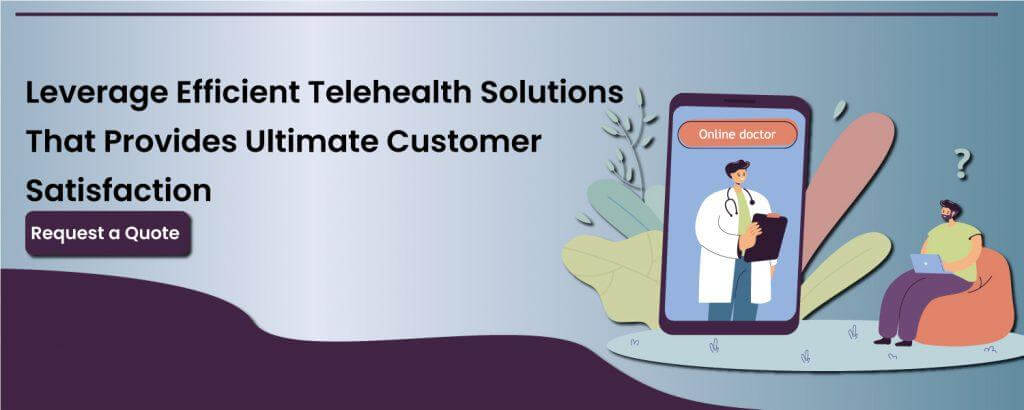
Final Takeaway
Telemedicine for pediatrics has been revamping the field of neonatal health care with significant advancements in technology. Suppose healthcare providers have the right technology and digital solutions they can effectively take care of newborns. If you are looking for digital solutions for Telemedicine for pediatrics, VCDoctor has a wide range of effective solutions for your business. We deliver efficient solutions with ultimate customer satisfaction. Get in touch with our experts today and discuss your requirements!

